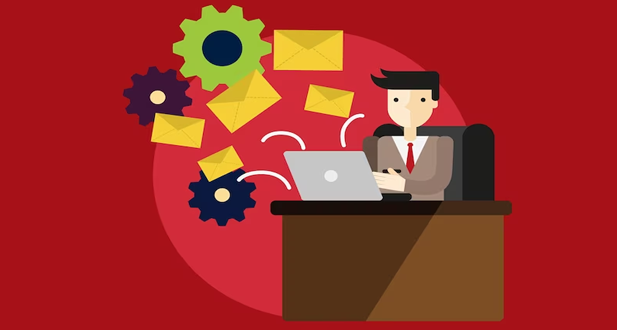How to Switch to a New Email Solution
Switching to a new email solution can be a daunting task, but it doesn’t have to be. With proper planning and execution, the process can be seamless and stress-free. Whether you’re moving to a new email provider or upgrading to a more feature-rich platform, here are some tips to help you switch to a new email solution.
Evaluate your needs: The first step to switching to a new email solution is to evaluate your needs. What features do you need? What are your priorities? Do you need a platform that offers collaborative features, or one that focuses on privacy and security? Identifying your needs will help you narrow down your options and find an email solution that meets your requirements.
Choose your new email provider: Once you’ve identified your needs, it’s time to choose your new email provider. Do some research and compare different options. Look at their pricing, features, and user reviews. Consider factors like data privacy, storage capacity, and integration with other tools. Take your time and choose a provider that fits your needs and budget.
Notify your contacts: Before you switch to a new email solution, it’s important to notify your contacts. Send them an email informing them of the switch and provide them with your new email address. You can also include a signature in your current email address that lets people know you’re switching to a new provider and when the switch will take place.
Export your old emails: If you want to keep your old emails, you’ll need to export them from your current email provider. Most providers offer an option to export your emails in different formats like PST or MBOX. Once you’ve exported your emails, you can import them into your new email provider. Make sure to test the import process to ensure everything works properly.
Set up your new email account: Once you’ve chosen your new email provider, it’s time to set up your new email account. Follow the provider’s instructions to create your account and customize your settings. Be sure to set up your signature and any other personalized settings.
Forward emails: If you’re not ready to completely switch to your new email solution, you can set up email forwarding. This will allow you to receive emails sent to your old email address in your new email account. You can also set up an autoresponder that lets people know you’re switching to a new email provider and provides them with your new email address.
Test your new email account: Before you start using your new email account, make sure to test it. Send a test email to yourself or a friend to ensure everything is working properly. Check your spam and junk folders to ensure emails are not being filtered incorrectly.
Update your email signature: Once you’ve switched to your new email solution, update your email signature to include your new email address and any other relevant information. Make sure to update your signature in all your email accounts and on any platforms where you’ve shared your email address.
Notify any online accounts: Finally, it’s important to update any online accounts that are associated with your old email address. This includes social media, online shopping accounts, and other online services. Log in to each account and update your email address to ensure you continue to receive important notifications.
How do I change all my stuff over to a new email?
Changing your email address can be a daunting task, as you may have accumulated a lot of important contacts and accounts associated with your old email. However, with a little planning and organization, the transition can be smooth and stress-free. Here are some steps to help you change all your stuff over to a new email:
Create a new email address
Before you start changing your email address on all your accounts and contacts, you need to create a new email address. Choose a reputable email provider that suits your needs, such as Gmail, Yahoo Mail, or Outlook. Make sure to choose a strong and unique password to keep your new email account secure.
Update your email address on important accounts
The first step to changing your email address is to update it on all your important accounts, such as your bank, insurance, and utility companies. This is crucial as you don’t want to miss any important communication from these companies. You can either log in to your account and update your email address or contact the customer support to assist you with the process.
Update your email address on social media and other online accounts
Next, you should update your email address on all your social media and online accounts. This includes your Facebook, Twitter, LinkedIn, Instagram, and any other social media accounts you may have. You should also update your email address on any online shopping, gaming, or subscription services you use.
Notify your contacts of your new email address
Once you have updated your email address on all your accounts, you need to notify your contacts of your new email address. This includes your family, friends, colleagues, and any other important contacts you have. You can send a mass email or use social media to notify your contacts of the change.
Forward emails from your old email address
To ensure that you don’t miss any important emails sent to your old email address, you should set up email forwarding. This will automatically forward any emails sent to your old email address to your new email address. Most email providers offer this feature, and it is easy to set up.
Keep your old email address active
Even after you have updated your email address on all your accounts and notified your contacts, you should keep your old email address active for some time. This is because some accounts or contacts may still use your old email address, and you don’t want to miss any important communication. You can set up an auto-reply message on your old email address, informing people that you have changed your email address and providing them with your new email address.
Changing your email address may seem like a daunting task, but with careful planning and organization, the transition can be smooth and stress-free. By following these steps, you can ensure that you update your email address on all your accounts and notify your contacts of the change, while keeping your old email address active to avoid missing any important communication.
Five Steps To Consider When Changing Your Email
Email is an essential tool in our personal and professional lives. It allows us to communicate quickly and efficiently with people all around the world. However, sometimes we may need to change our email address for various reasons, such as security concerns or a new job. Whatever the reason, changing your email address can be a daunting task. Here are five steps to consider when changing your email address.
Step 1: Choose a new email provider
The first step in changing your email address is to choose a new email provider. There are many email providers to choose from, such as Gmail, Yahoo Mail, Outlook, and ProtonMail. Each provider has its strengths and weaknesses, so it’s essential to consider which one will best suit your needs.
For example, Gmail is one of the most popular email providers, and it offers a wide range of features, including a large storage capacity and integration with other Google products. On the other hand, ProtonMail is a secure email provider that offers end-to-end encryption, making it a good choice for those who prioritize privacy.
Step 2: Notify your contacts
Once you have chosen a new email provider and set up your new email account, it’s time to notify your contacts of your new email address. This can be a time-consuming process, but it’s essential to ensure that you don’t miss any important emails.
Start by sending an email to your contacts announcing your new email address and asking them to update their records. You can also consider setting up an auto-reply on your old email address to inform people of your new email address and provide instructions on how to update their records.
Step 3: Update your online accounts
After notifying your contacts, it’s time to update your online accounts with your new email address. This includes social media accounts, online shopping accounts, and any other online accounts that you use regularly.
Start by updating your most critical accounts first, such as your bank account, utility providers, and insurance companies. It’s also a good idea to update any subscriptions you have, such as streaming services or online magazines.
Step 4: Transfer your data
One of the most challenging aspects of changing your email address is transferring your data from your old account to your new account. This includes emails, contacts, and any files or documents that you have saved in your old email account.
The process of transferring your data will depend on your old email provider and your new email provider. Many email providers offer tools to help you transfer your data, but you may need to do some manual transferring as well.
Step 5: Close your old email account
The final step in changing your email address is to close your old email account. This is an essential step, as it ensures that your old account is not vulnerable to hackers or other security threats.
Before closing your old email account, make sure that you have transferred all of your data to your new account and updated your online accounts with your new email address. You may also want to set up an auto-reply on your old email address to inform people that you have a new email address and provide instructions on how to contact you.
Changing your email address can be a time-consuming process, but it’s essential to ensure that your online presence remains secure and up-to-date. By following these five steps, you can make the process of changing your email address as smooth as possible and ensure that you don’t miss any important emails.
Conclusion
In conclusion, switching to a new email solution can seem overwhelming at first, but with careful planning and execution, the process can be smooth and seamless. Evaluate your needs, choose your new email provider, notify your contacts, export your old emails, set up your new email account, forward emails, test your new email account, update your email signature, and notify any online accounts. With these tips, you’ll be able to switch to a new email solution with confidence.
Frequently Asked Questions
There are many email solutions available, including popular options like Gmail, Outlook, Yahoo Mail, ProtonMail, and Zoho Mail, among others. You should research different options to find the one that best fits your needs.
Before switching to a new email solution, it’s important to back up your current email data, including emails, contacts, and other important information. Most email providers offer a way to export your data, which you can then save to your computer or an external hard drive.
Once you’ve chosen a new email solution, you’ll need to create a new account. Simply go to the provider’s website and follow the instructions to set up a new account. You’ll need to provide your name, email address, password, and other basic information.
After setting up your new account, you’ll need to transfer your old email data to your new account. Most email providers offer an option to import data from another email account. You’ll need to provide your old email account information and follow the instructions to import your data.
After switching to a new email solution, you’ll need to update your contacts with your new email address. You can do this manually by sending an email to each contact with your new email address, or you can use a service that automatically updates your contacts for you.




